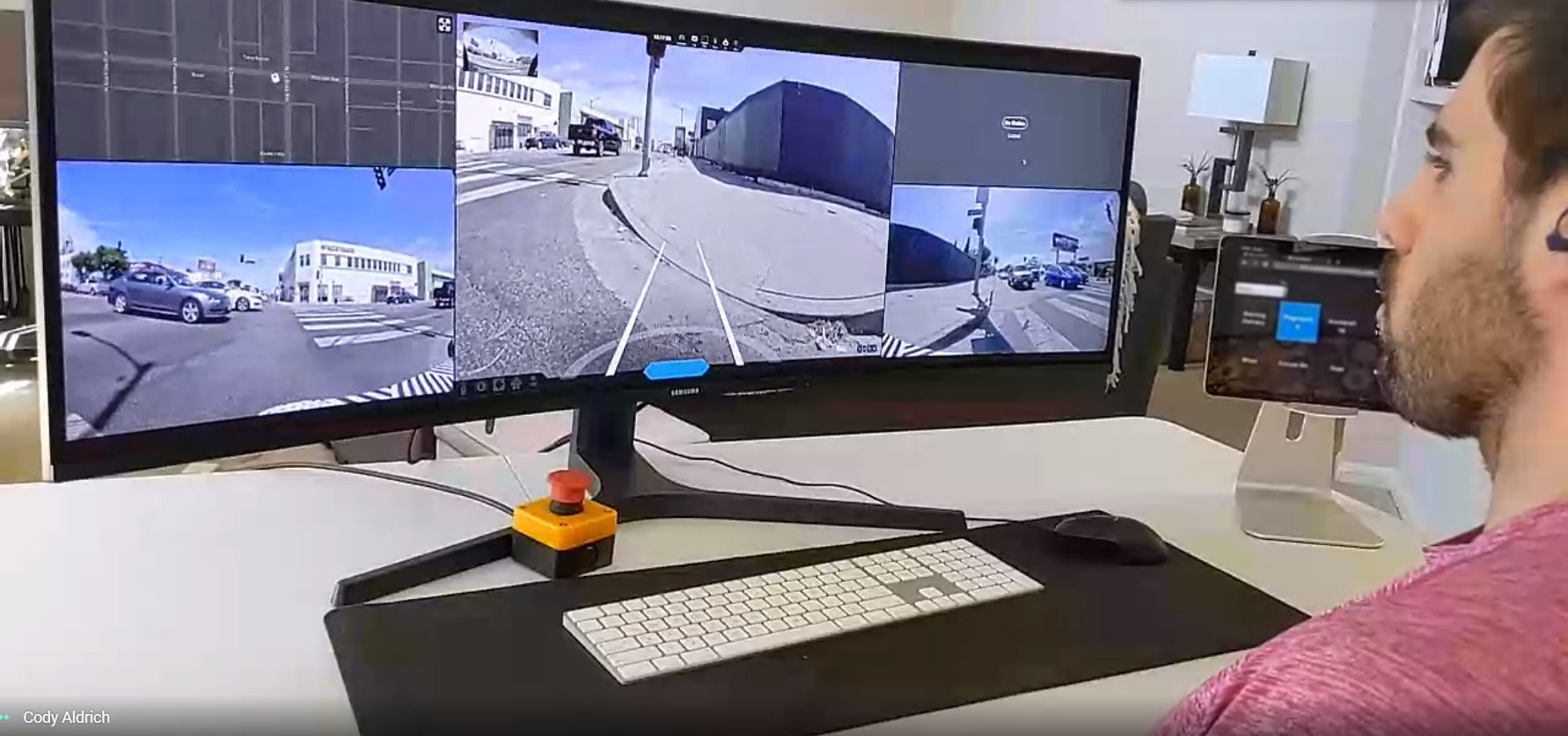
COVID-19 knocked the wheels off the economy, but one nascent tech job not only kept rolling, it picked up speed.
Teleoperations — or more specifically, teleops for autonomous delivery robots — is still a niche job within an industry that has yet to dive into the deep end of the commercialization pool. However, the job, in which a human remotely monitors and guides autonomous robots, has seen growth along with rising demand for contactless delivery over the past several months.
And it appears that COVID-19 inadvertently expanded the labor pool — at least for Postmates.
On-demand delivery startup Postmates partnered last year with Phantom Auto, an autonomous vehicle teleoperations company. Postmates uses Phantom Auto’s software development kit to remotely monitor, guide or operate its fleet of cooler-inspired autonomous delivery robots known as Serve.
The partnership is part of Phantom Auto’s efforts to diversify beyond autonomous robotaxi applications to a logistics business targeting sidewalks, warehouses and cargo yards — all the places where autonomy and teleoperation are being deployed today.
Momentum for delivery robots
The so-called “race” to deploy self-driving trucks, robotaxi services and other applications of autonomous vehicle technology on public roads had slowed long before COVID-19 appeared. Deployment timelines moved as engineers dug into the harder-than-expected challenges of validating and verifying that their self-driving vehicle technology was safe enough to operate without a human operator behind the wheel. The smaller less capitalized startups have tried to pivot, some unsuccessfully.
COVID-19 has slowed development even further with one exception: autonomous delivery robots that operate on sidewalks or in bike lanes — not roads. Startups like Refraction AI, Starship Technologies and Postmates have experienced an uptick in demand as COVID-19 prompted cities, counties and states to issue stay-at-home orders. Autonomous robots, once considered novelties, have become accepted and even sought after. For instance, Nuro’s R2 delivery robots are being used to move medical supplies around two stadiums in California that were converted into COVID-19 treatment centers.

A Postmates employee monitors one of the company’s autonomous delivery robots. Photo: Postmates
As COVID-19 swept into the U.S., Postmates executives came to the conclusion that this was going to be a long ordeal. The company had already sent its engineering staff to work from home, but its teleoperators were still in coming to the company’s operations centers.
By mid-March, stay-at-home orders began in San Francisco and Los Angeles — the two markets where Postmates operates its autonomous delivery bots. Soon after, Postmates made its move and turned teleoperators, or fleet supervisors as they call them, into a work-from-home job.
“We had this recognition that this isn’t really going to be a two or three-week phase,” Ali Kashani, Postmates’ vice president of special projects said in a recent interview. “We realized that we have a role to play here — we can actually do something.”
Postmates decided to ramp up the deployment of its Serve robots, which would require more teleoperations workers. These autonomous robot guides are needed to make sure the Serve bots make it safely to and from their destination.
Using Phantom Auto’s software, a Postmates fleet supervisor can monitor a robot from thousands of miles away. The supervisor will jump in to help the bot navigate the first and last 15 feet to a restaurant or the recipient or if it needs help crossing a busy street.
These robot guides can assist using a couple of methods. The human teleoperator can provide input to the system, something as simple as a thumbs up or thumbs down to help the bot make the right choice. The employee can also use a hand-held remote controller to steer, accelerate and slow down the bot in real-time.
Instead of cramming people into its operations centers, Postmates took the tech to employees’ homes. The company, along with an assist from Phantom Auto, set up at-home workstations, upgraded their internet and developed new standard operating procedures to ensure that managers could monitor their connectivity more effectively.
Postmates had its fleet supervisors working from home a few days after the first shelter-in-place orders kicked off in mid-March, Kashani said.
That seemingly obvious move might never happened had it not been for COVID-19. Under normal operating procedures, fleet supervisors worked in Postmates’ centralized operation center facilities in San Francisco and Los Angeles.
When it moved the job to employees’ homes, Postmates discovered it had a much larger labor pool to pull from. Postmates can now employ workers who live far from its offices or people with disabilities who might have difficulty traveling from home.
The company has increased its fleet supervisors by 30% since San Francisco issued its shelter-in-place order March 17. Postmates wouldn’t share exact employee numbers.
Kashani said demand for robot deliveries was never the problem. “The limitations in this kind of business is just how many robots can you build and deploy?” Kashani said. And the more robots that are deployed, the more fleet supervisors are needed.

